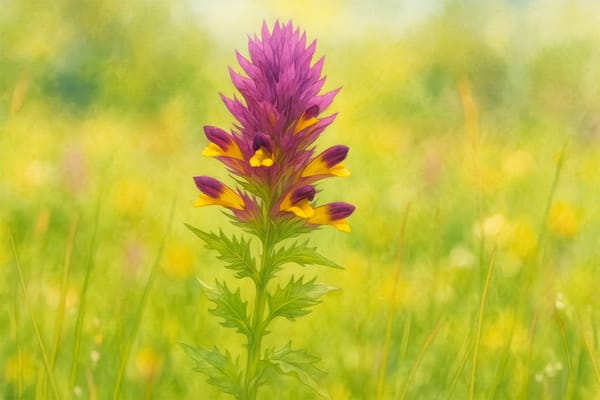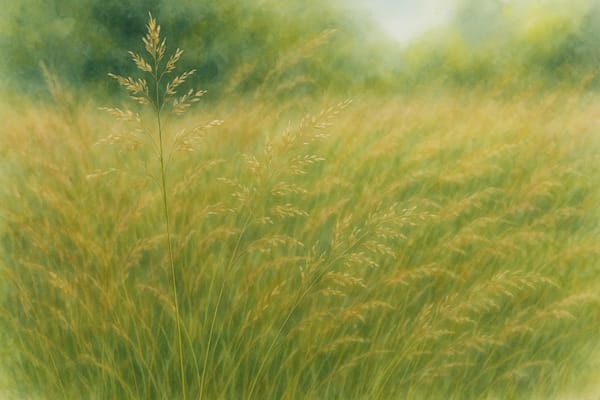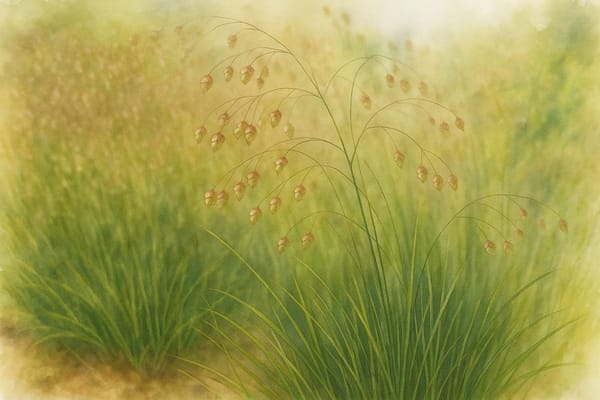From “Poverty Weed” to Pollinator Gem
Historical and Cultural Significance
With vibrant magenta flowers and a quietly defiant spirit, Field Cow-wheat was once an unwelcome guest in British cereal fields. Now rare and revered, it offers insight into past farming traditions and present conservation priorities.
A Troublesome Beauty:
In 19th-century Cornwall and across southern England, this wildflower was known as a “poverty weed”—flour contaminated with its seeds turned dark and unpalatable, harming farmers’ incomes. So reviled was it that people were paid to remove and burn it, ensuring no seeds survived.
Folk Beliefs & Superstition:
Despite its status as a nuisance, Field Cow-wheat carried traces of folklore. Cow-wheats were sometimes thought to offer protection against evil and were hung over doorways for luck. These contradictions—unwanted yet spiritually potent—make Field Cow-wheat an intriguing relic of rural belief.
From Threat to Treasure:
Now a conservation priority, its return signals not just botanical recovery, but a return to slower, more wildlife-friendly farming. Where it grows, the echoes of a lost agricultural landscape are still heard.
Growing Field Cow-wheat in Coastal Gardens
Naturally adapted to poor, dry soils, Field Cow-wheat thrives in open, sunny sites with low nutrients—conditions common in coastal settings. As a hemiparasite, it draws nutrients from the roots of surrounding grasses, making it ideal for wildflower lawns and meadow borders.
| Requirement | Details |
|---|
| Light | Full sun preferred |
| Soil | Poor, sandy or chalky; well-drained |
| Moisture | Dry to moderately moist; avoid waterlogging |
| pH | Neutral to alkaline |
| Salt Tolerance | Moderate; tolerates wind and exposure |
| Hardiness | Fully hardy in the UK |
Coastal Care Tips
- Site Selection:
Ideal for wildflower patches and sunny coastal margins with dry, nutrient-poor soils. Avoid enriched flower beds. - Sowing & Establishment:
Sow in autumn directly among established grasses. As a semi-parasite, Field Cow-wheat draws nutrients from surrounding roots—don’t isolate it. - Soil & Fertiliser:
Do not fertilise. Rich soils hinder growth and encourage competition. Add fine grit or chalk if your soil is too fertile. - Watering:
Needs little water once established. Only irrigate during long droughts in its first season. - Weed Control:
Keep vigorous weeds at bay while the plant establishes. Avoid disrupting host grass roots. - Pests:
Generally trouble-free, though slugs may nibble seedlings in spring.
Special Notes for Coastal Gardens
Field Cow-wheat is especially suited to naturalistic garden styles—think soft, drought-tolerant meadows, grassy paths, or sunny borders that echo cliff-edge biodiversity.
Its subtle parasitism helps reduce aggressive grass growth, opening space for wild diversity to thrive. Add it to your garden not only for its splash of colour, but as a symbolic act of land care—welcoming a species once scorned, now in need of protection.
Quick-Glance Table
| Step | Traditional Tip |
|---|
| Soil & Light | Full sun, poor chalky or sandy soil; no fertiliser |
| Sowing | Autumn sowing directly into wild lawn or meadow area |
| Watering | Minimal once established |
| Fertiliser | Avoid entirely to maintain competitive balance |
| Coastal Use | Ideal for exposed, dry wildflower areas and erosion-tolerant borders |











